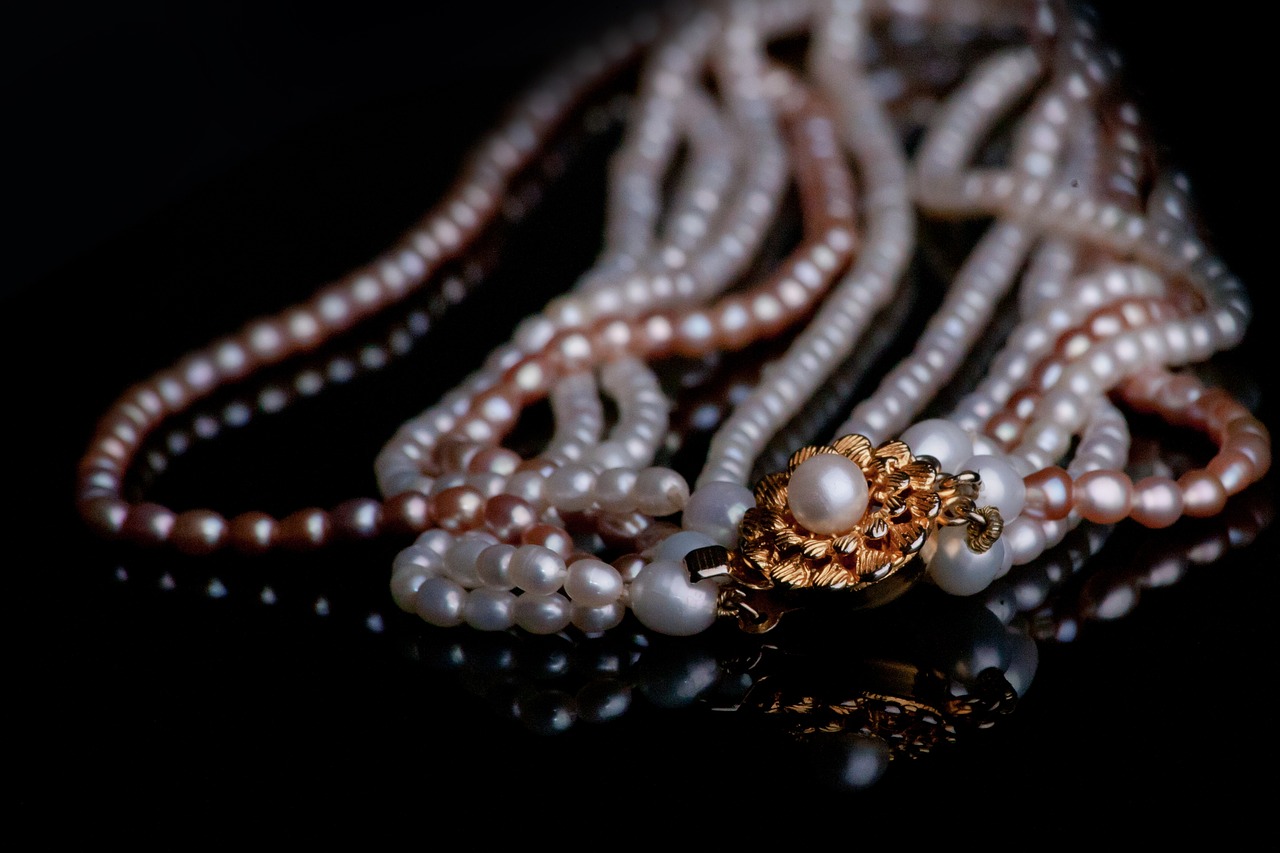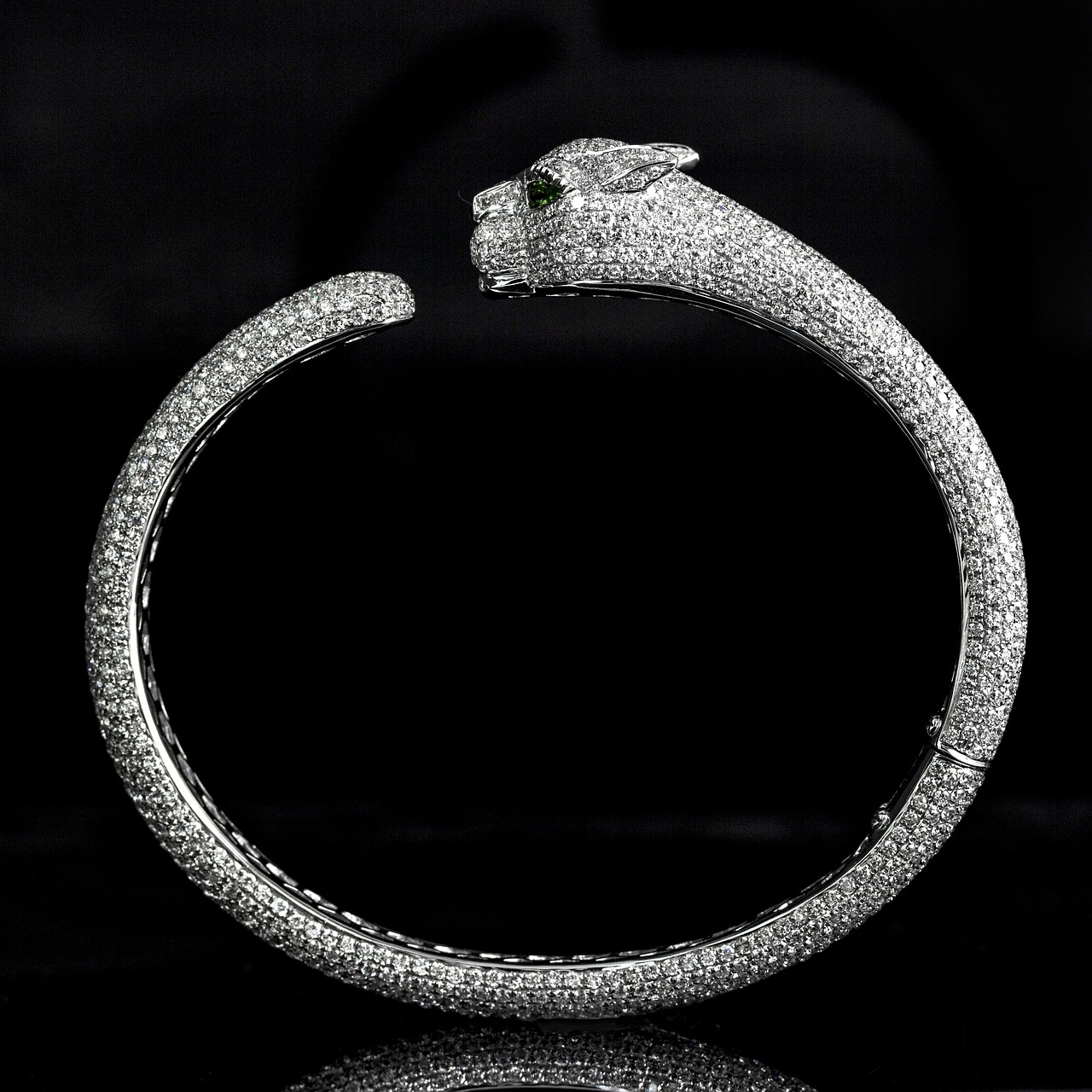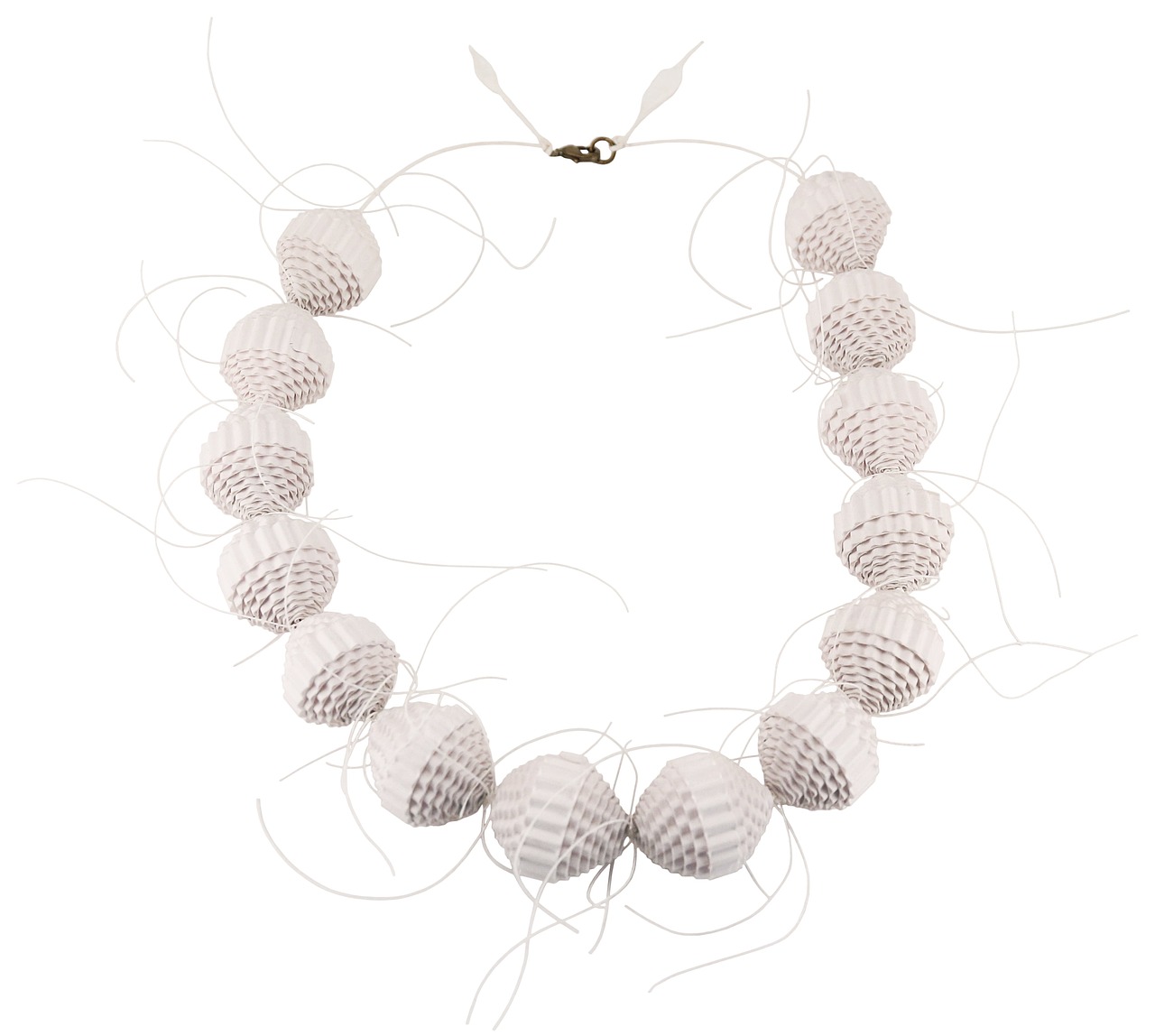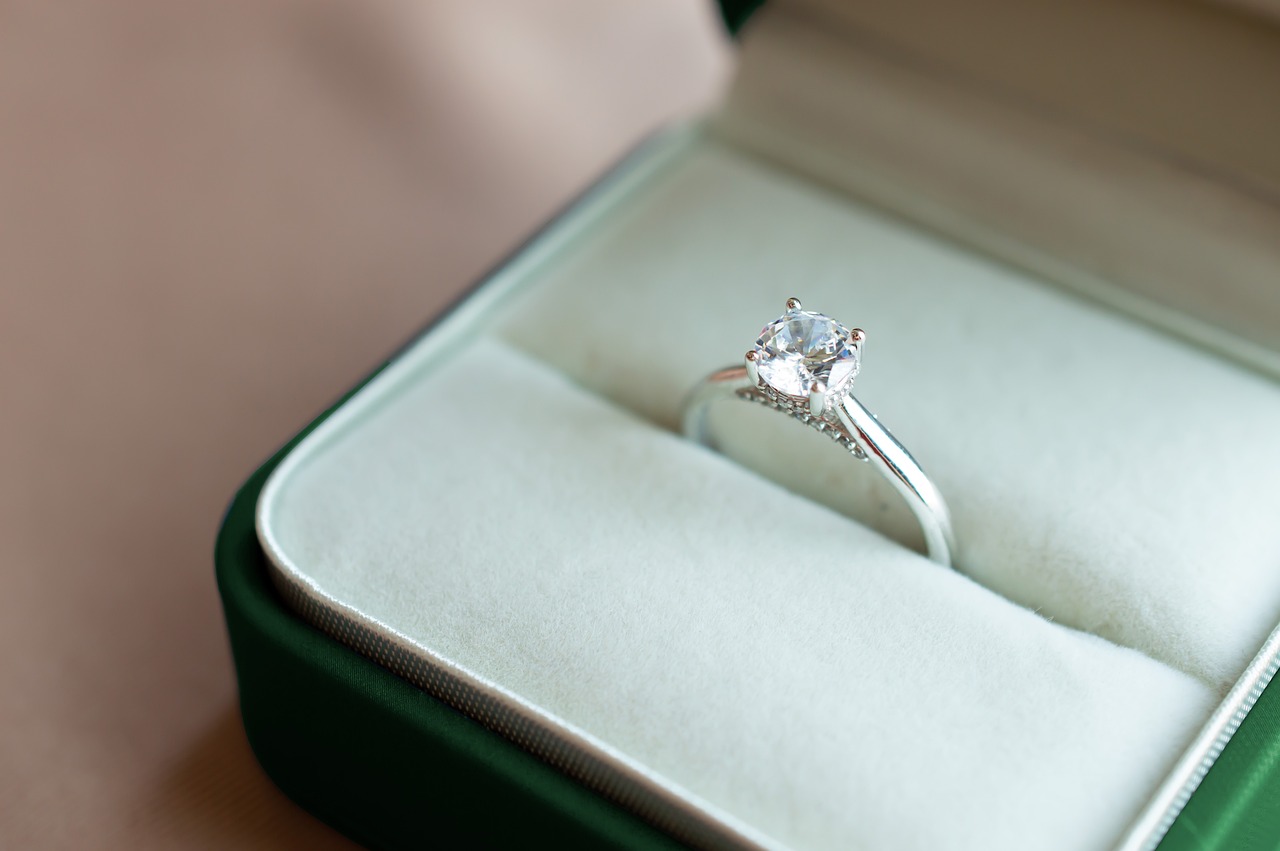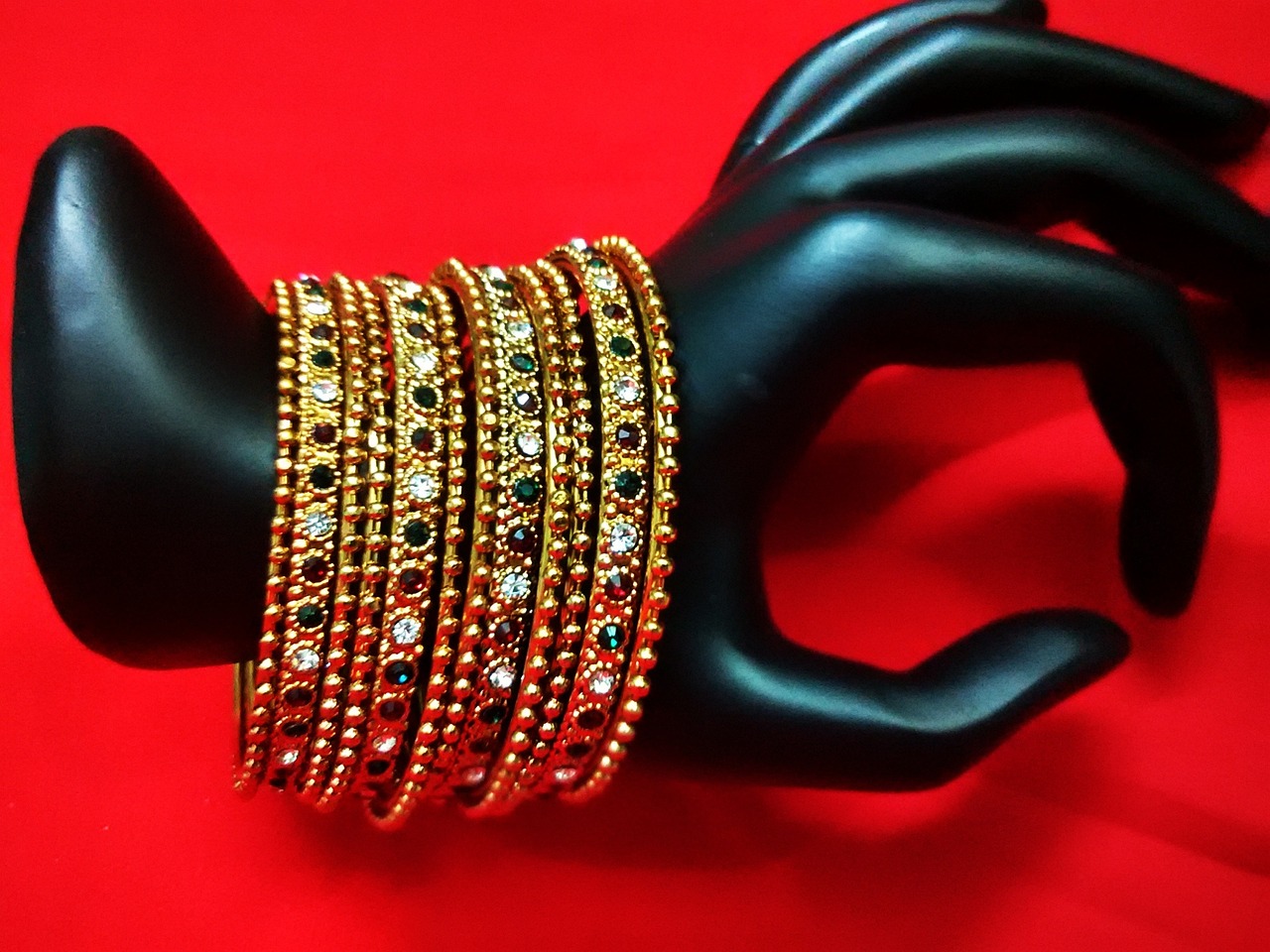Smart Jewelry represents a groundbreaking fusion of technology and fashion, creating a unique niche in the wearable tech market. This innovative segment of jewelry not only enhances personal style but also incorporates functionalities that cater to modern lifestyle needs. This article will delve into the evolution, benefits, and anticipated trends shaping the future of smart jewelry.
Smart jewelry is defined as fashionable accessories embedded with technology that allows them to perform various functions, such as fitness tracking, notifications, and health monitoring. Unlike traditional jewelry, smart jewelry seamlessly integrates aesthetics with practicality, appealing to consumers who value both style and utility.
The technology behind smart jewelry is fascinating. These accessories often utilize sensors to gather data, which is then transmitted via Bluetooth or other connectivity methods to smartphones or other devices. This data integration allows users to monitor their health metrics or receive notifications without needing to check their phones constantly.
- Fitness Tracking Rings: These rings provide insights into physical activity, heart rate, and sleep patterns.
- Notification Bracelets: Bracelets that discreetly sync with smartphones to deliver alerts.
- Smart Necklaces: Necklaces that may include features like health monitoring and notifications.
Smart jewelry is not only a fashion statement; it also promotes wellness. By providing real-time data on health metrics, users can make informed decisions about their lifestyle. For example, fitness tracking rings can help users set and achieve health goals, thereby encouraging a more active lifestyle.
The intersection of technology and jewelry has sparked new fashion trends. Designers are increasingly incorporating smart features into their creations while ensuring these pieces remain stylish. This trend reflects a growing consumer demand for functional fashion.
Fashion designers are pushing the envelope by creating visually appealing smart jewelry. Innovative designs often blend traditional craftsmanship with modern technology, resulting in pieces that are not only functional but also serve as conversation starters.
Customization is a significant aspect of modern fashion. Smart jewelry allows users to personalize features and styles, reflecting their individuality. This customization can range from choosing colors and materials to selecting specific functionalities that suit personal preferences.
Despite its many advantages, smart jewelry faces several challenges. Issues such as battery life, privacy concerns, and market competition could hinder its growth. Addressing these challenges is crucial for the future success of smart jewelry.
A major concern for users is the battery life of smart jewelry. As technology advances, manufacturers are working on improving battery performance to ensure these devices can last longer without frequent recharging.
With the collection of personal data comes the responsibility of protecting user information. Privacy concerns are paramount, and manufacturers are implementing measures to enhance data security, ensuring that users feel safe while using their smart jewelry.
As technology continues to evolve, so does the realm of smart jewelry. Future trends may include further integration with smart home devices, allowing users to control their environments through their accessories. The potential market growth is substantial, driven by increasing consumer demand for multifunctional wearables.
The smart jewelry market is projected to expand significantly in the coming years. Factors driving this growth include heightened consumer awareness of health and wellness, the popularity of wearable technology, and ongoing innovations in design and functionality.
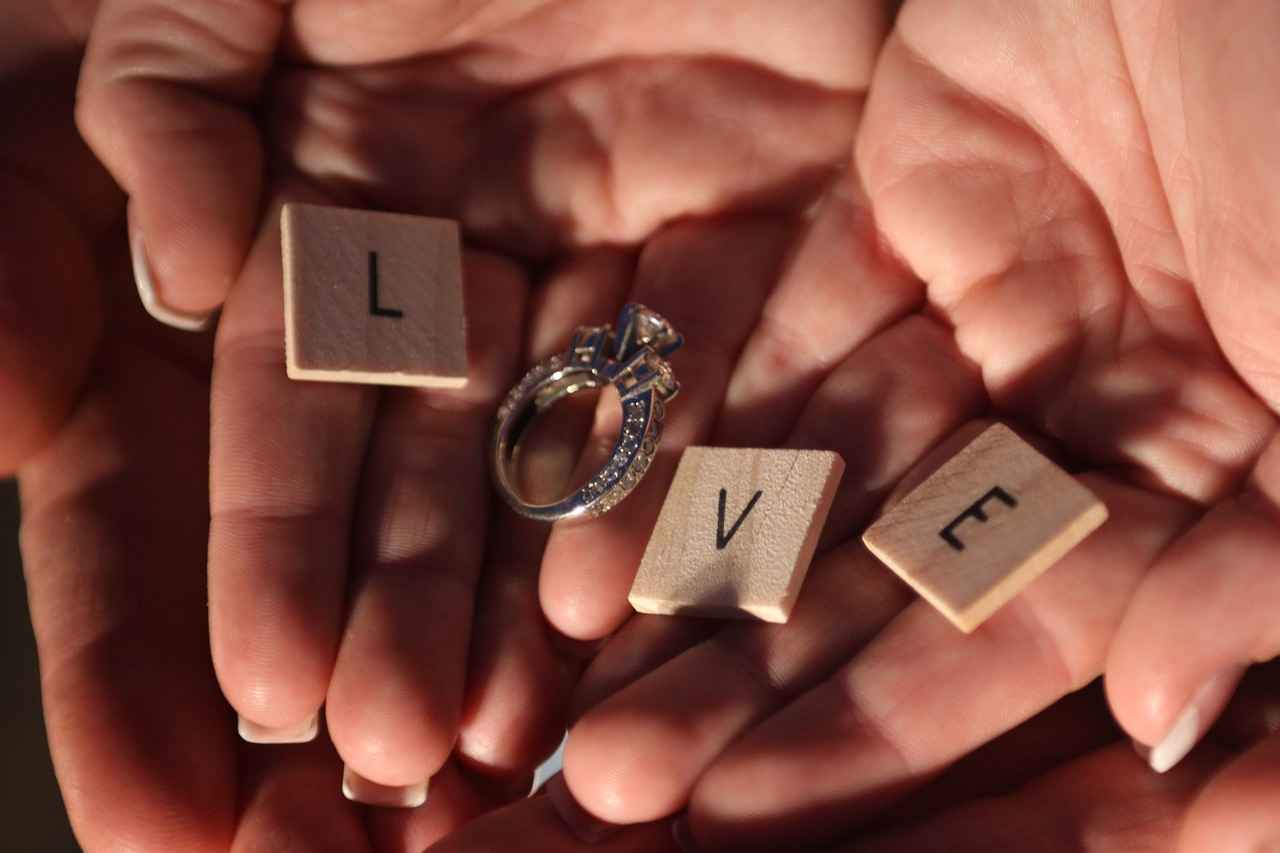
What is Smart Jewelry?
Smart jewelry represents a groundbreaking fusion of technology and fashion, creating a new realm of wearable devices that not only enhance personal style but also offer a myriad of functionalities. This innovative segment of the wearable tech industry has evolved significantly, providing users with tools for fitness tracking, health monitoring, and real-time notifications, all while ensuring that the aesthetic appeal remains intact. In this section, we will explore the definition of smart jewelry and its core features that make it a must-have accessory in today’s tech-savvy world.
At its essence, smart jewelry is designed to be both functional and fashionable. Unlike traditional jewelry, which primarily serves an ornamental purpose, smart jewelry integrates advanced technology to offer practical benefits. These devices often come equipped with sensors that monitor various health metrics, such as heart rate and sleep patterns, while also keeping users connected through notifications from smartphones.
Core Features of Smart Jewelry:
- Fitness Tracking: Many smart jewelry pieces come with built-in fitness tracking capabilities. They can monitor steps taken, calories burned, and even provide insights into sleep quality, helping users maintain a healthier lifestyle.
- Notifications: Smart jewelry can sync with smartphones to deliver notifications discreetly. This allows users to stay connected without constantly checking their phones, making it ideal for professional settings or social gatherings.
- Health Monitoring: Advanced models can track vital signs and other health metrics. This feature is particularly beneficial for individuals managing chronic conditions or those who want to keep a close eye on their health.
- Aesthetic Appeal: One of the most significant aspects of smart jewelry is its design. It is crafted to look stylish and elegant, ensuring that users do not have to compromise on fashion for functionality.
As the market continues to expand, smart jewelry is becoming increasingly diverse, with options ranging from rings and bracelets to necklaces and earrings. This variety allows consumers to choose pieces that best fit their personal style and functional needs.
In conclusion, smart jewelry is not just a passing trend; it is a reflection of how technology can enhance our daily lives while allowing us to express our individuality through fashion. With continuous advancements in technology and design, the future of smart jewelry looks promising, making it an exciting area to watch in the coming years.

How Does Smart Jewelry Work?
Understanding the technology behind smart jewelry is crucial. These innovative accessories are not merely fashionable; they are equipped with a variety of advanced features that enhance their functionality. This section delves into the intricate mechanisms that enable smart jewelry to operate seamlessly, focusing on three key components: sensors, connectivity, and data integration.
- Sensors: At the heart of smart jewelry are sophisticated sensors that monitor various metrics. For instance, fitness tracking rings often contain accelerometers and gyroscopes that track movement and physical activity. These sensors can measure steps taken, calories burned, and even sleep patterns. In health-focused pieces like smart bracelets, biometric sensors can track heart rate and stress levels, providing users with valuable health insights.
- Connectivity: Smart jewelry utilizes Bluetooth technology to connect with smartphones and other devices. This connectivity allows for real-time data transmission, enabling users to receive notifications, alerts, and updates directly on their jewelry. For example, a notification bracelet can vibrate to inform the wearer of incoming calls or messages without needing to check their phone. This seamless integration enhances user experience and ensures that important information is always at hand.
- Data Integration: The data collected by smart jewelry is often integrated into user-friendly applications that provide insights and analytics. These apps not only display real-time data but also track trends over time, allowing users to monitor their health and fitness progress. Some applications even offer personalized recommendations based on the data collected, helping users make informed lifestyle choices. For example, a smart ring might suggest adjustments to sleep habits based on tracked patterns.
In addition to these core components, many smart jewelry pieces are designed with user customization in mind. This allows users to tailor their experience, selecting which notifications to receive and how to respond. For instance, users can often choose specific apps to sync with their smart jewelry, ensuring that they only receive alerts that matter most to them.
Moreover, the technology behind smart jewelry is continually evolving. Advances in materials science have led to the development of more durable and aesthetically pleasing designs, while improvements in battery technology are extending the lifespan of these devices. As a result, users can enjoy the benefits of smart jewelry without the frequent need for recharging.
The integration of artificial intelligence (AI) is another exciting frontier for smart jewelry. Future iterations may include AI-driven features that learn user habits and preferences, further enhancing the personalization of the experience. Imagine a bracelet that not only tracks your fitness but also suggests workout routines based on your past activities and goals.
In summary, the functionality of smart jewelry is a fascinating blend of technology and style. By incorporating advanced sensors, seamless connectivity, and robust data integration, these devices offer users a unique way to enhance their lifestyle. As technology continues to advance, the possibilities for smart jewelry will only expand, making it an exciting area to watch in the intersection of fashion and technology.
Types of Smart Jewelry
Smart jewelry is an exciting fusion of technology and style, offering a variety of options for consumers looking to enhance their fashion while benefiting from advanced functionalities. This section categorizes and describes the different types of smart jewelry available today, showcasing their unique features and applications.
Smart rings are compact devices that offer a range of health and fitness tracking capabilities. They can monitor heart rate, track sleep patterns, and even count steps, all while being stylish and unobtrusive. Popular models like the Oura Ring and Motiv Ring have gained attention for their sleek designs and robust health metrics. These rings not only serve as a fashion statement but also provide valuable insights into the wearer’s health.
Notification bracelets have become essential for individuals who want to stay connected without being distracted. These bracelets sync with smartphones to deliver notifications for calls, messages, and social media alerts. Brands like Fitbit and Garmin have developed models that prioritize both functionality and style, ensuring that wearers can receive updates discreetly. This type of smart jewelry is particularly appealing to those who want to maintain their focus while remaining informed.
Smart necklaces combine elegance with technology, often featuring pendants that can track fitness metrics or provide notifications. Some models even include emergency features, allowing wearers to send alerts in case of distress. Brands like Bellabeat have created necklaces that not only look beautiful but also focus on women’s health, offering insights into reproductive health and stress levels.
Smart bracelets are versatile accessories that can serve multiple purposes, from fitness tracking to heart rate monitoring. Many models come equipped with features to monitor caloric intake and hydration levels, making them ideal for health-conscious individuals. Their designs range from sporty to elegant, catering to various tastes and occasions.
Though still a developing category, smart earrings are making waves with innovative designs that incorporate technology into jewelry. These devices can monitor health metrics and even offer functionalities like sound amplification for better hearing. As technology continues to evolve, we can expect to see more stylish options that blend seamlessly with everyday wear.
Customization is a growing trend in the smart jewelry market. Many brands now offer options to personalize features and designs, allowing users to express their individuality. For instance, some smart bracelets can change colors or patterns based on user preferences or even sync with the wearer’s mood, making them not just functional but also a form of self-expression.
In conclusion, the variety of smart jewelry available today caters to diverse needs and preferences, merging technology with personal style. As advancements continue, we can expect even more innovative designs that enhance both functionality and aesthetic appeal, making smart jewelry an integral part of the future of fashion.
Fitness Tracking Rings
As technology continues to evolve, have emerged as a significant player in the realm of wearable devices. These innovative pieces of jewelry not only serve as fashionable accessories but also provide users with essential health metrics. By seamlessly blending style and functionality, fitness tracking rings are revolutionizing how we monitor our well-being.
These rings are equipped with advanced sensors that monitor physical activity, track heart rate, and analyze sleep patterns. This data is invaluable for individuals looking to improve their health and fitness levels. With real-time feedback, users can make informed decisions about their daily activities and lifestyle choices.
Among the popular models on the market, the Oura Ring stands out due to its sleek design and comprehensive health tracking features. It provides insights into your readiness to perform, sleep quality, and overall activity levels. The ring syncs with a smartphone app, allowing users to easily access and interpret their health data.
Another notable model is the Motiv Ring, which combines fitness tracking with a stylish appearance. It tracks steps, active minutes, and even heart rate, all while boasting a lightweight design that can be worn comfortably throughout the day. Users appreciate its long battery life, which can last up to five days on a single charge.
Additionally, the Biostrap Ring offers unique features like blood oxygen monitoring and sleep analysis. It is particularly popular among athletes and fitness enthusiasts who seek to optimize their performance through detailed health insights. The accompanying app provides personalized recommendations based on the data collected, making it a valuable tool for anyone serious about their fitness journey.
What sets these fitness tracking rings apart is their ability to deliver valuable health insights without compromising on style. Users can wear them in various settings—whether at work, during workouts, or out for a night on the town—without feeling self-conscious about their tech. This balance of aesthetics and functionality is crucial in a market where consumers are increasingly looking for products that enhance their lifestyle without sacrificing personal style.
Moreover, the data collected by these rings can help users identify patterns in their behavior. For instance, by analyzing sleep quality alongside daily activity levels, users can pinpoint factors that contribute to restful nights or restless ones. This understanding empowers individuals to make lifestyle adjustments that can lead to improved health outcomes.
As the demand for wearable technology grows, it’s evident that fitness tracking rings will continue to evolve. Manufacturers are constantly innovating, seeking to incorporate new features and improve user experience. From enhanced battery life to more accurate sensors, the future of fitness tracking rings looks promising.
In summary, fitness tracking rings represent a significant advancement in wearable technology. They offer users a unique blend of health monitoring and style, making them an attractive option for those looking to enhance their well-being. With popular models like the Oura Ring, Motiv Ring, and Biostrap Ring leading the way, the future of fitness tracking rings is bright, and their impact on personal health management is undeniable.
Notification Bracelets
have emerged as a significant trend in the realm of wearable technology, seamlessly integrating style with functionality. These innovative accessories are designed to sync with smartphones, providing users with the ability to receive notifications discreetly. This article delves into the functionality and user experience associated with these modern-day gadgets.
Notification bracelets are smart devices worn on the wrist that connect to your smartphone via Bluetooth. They serve as an extension of your phone, allowing you to stay updated without having to constantly check your device. With the rise of mobile notifications, these bracelets provide a subtle way to manage alerts for calls, messages, and app notifications.
These bracelets utilize a combination of sensors and connectivity technology to deliver notifications. When paired with a smartphone, they can receive alerts and vibrations for incoming messages or calls. Users can customize which notifications they wish to receive, ensuring that they only get the information that matters most. The integration of haptic feedback allows for discreet alerts, making them ideal for professional settings or social gatherings.
- Discreet Alerts: Unlike smartphones, which can be distracting, notification bracelets provide a subtle way to stay informed.
- Fashionable Designs: Many brands offer stylish options that can be worn with various outfits, making them a fashionable accessory.
- Health Monitoring: Some models also include health tracking features, adding further value to the user experience.
The user experience of notification bracelets is generally positive, with many users appreciating the convenience they offer. The ability to receive notifications without pulling out a phone is a significant advantage, especially in situations where checking a device may be inappropriate. Additionally, the customization options allow users to tailor their notification preferences, enhancing satisfaction.
Despite their advantages, notification bracelets do face challenges. One major concern is battery life. Many users report that frequent notifications can drain the battery quickly, necessitating regular recharging. Additionally, users may experience connectivity issues if they move out of range of their smartphone, leading to missed alerts.
As technology continues to evolve, the future of notification bracelets looks promising. Innovations may include improved battery technology, enhanced connectivity options, and even integration with smart home devices. This could allow users to control home automation systems directly from their bracelets, further enhancing their functionality.
In conclusion, notification bracelets represent a fascinating blend of technology and fashion, offering users a stylish way to stay connected. With their growing popularity, it is clear that these devices are not just a passing trend but a significant component of the future of wearable technology.
Health Benefits of Smart Jewelry
In today’s fast-paced world, wellness has become a top priority for many individuals. Smart jewelry has emerged as a revolutionary solution that not only enhances personal style but also plays a significant role in promoting health and well-being. This section explores the various ways smart jewelry can aid in health monitoring and encourage healthier lifestyles.
How Can Smart Jewelry Aid in Health Monitoring?
- Real-Time Health Tracking: Many smart jewelry pieces are equipped with advanced sensors that monitor vital signs such as heart rate, blood pressure, and oxygen levels. This real-time data allows users to track their health continuously and make informed decisions.
- Sleep Quality Monitoring: Quality sleep is crucial for overall health. Smart rings and bracelets can analyze sleep patterns, providing insights into sleep duration and quality. This information can help users improve their sleep habits.
- Activity Tracking: Fitness-focused smart jewelry can track physical activity, including steps taken, calories burned, and exercise intensity. This feature encourages users to stay active and reach their fitness goals.
Encouraging Healthier Lifestyles
Beyond monitoring, smart jewelry actively encourages users to adopt healthier habits:
- Personalized Health Insights: By collecting and analyzing data, smart jewelry can provide tailored health recommendations. For example, if a user is not meeting their daily activity goals, the device may send reminders or motivational messages.
- Stress Management: Certain smart jewelry pieces are designed to monitor stress levels through heart rate variability. Users can receive alerts when stress levels are high, prompting them to engage in relaxation techniques such as deep breathing or meditation.
- Hydration Reminders: Staying hydrated is essential for good health. Some smart jewelry can remind users to drink water throughout the day, helping them maintain optimal hydration levels.
Integration with Health Apps
Most smart jewelry can seamlessly integrate with health and fitness apps, allowing users to view their data in a more comprehensive manner. This integration can lead to:
- Better Data Visualization: Users can track their progress over time, set goals, and receive feedback on their health journey.
- Community Support: Many health apps offer community features where users can connect with others, share experiences, and motivate each other towards healthier lifestyles.
Conclusion
Smart jewelry represents a significant advancement in the realm of health monitoring and lifestyle enhancement. By combining fashion with functionality, these innovative devices empower users to take charge of their health in a stylish way. As technology continues to evolve, the potential for smart jewelry to contribute to wellness is boundless, making it an essential accessory for the modern health-conscious individual.

Fashion Trends in Smart Jewelry
The fusion of technology and fashion has given rise to a fascinating phenomenon known as smart jewelry. This innovative sector is not just about aesthetics; it incorporates advanced functionalities that cater to modern lifestyles. In this section, we will explore the latest , focusing on how designers are seamlessly integrating technology while ensuring that style remains paramount.
Today’s fashion designers are embracing a new ethos where technology and artistry coexist. This trend is evident in the way smart jewelry is crafted, allowing for both functionality and beauty. Designers are using materials like precious metals and gemstones alongside cutting-edge technology to create pieces that are visually stunning yet practical.
- Wearable Tech with Style: Smart rings and bracelets are being designed to look like traditional jewelry while housing advanced features such as fitness tracking and notifications.
- Minimalist Aesthetics: Many brands are opting for sleek, minimalist designs that appeal to a broader audience, making smart jewelry an everyday accessory.
- Artisanal Craftsmanship: Some designers are collaborating with artisans to create unique pieces that highlight traditional craftsmanship while integrating smart technology.
Personalization has become a significant trend in the smart jewelry market. Consumers today seek items that reflect their unique identities. Smart jewelry allows for:
- Customizable Features: Users can choose specific functionalities, such as health monitoring or notification settings, tailored to their needs.
- Interchangeable Designs: Many brands are introducing modular pieces, allowing wearers to swap out components to match their outfits or moods.
- Color and Material Choices: With a variety of colors and materials available, consumers can select pieces that resonate with their personal style.
Despite its growing popularity, the integration of technology in jewelry does present challenges. Some of these include:
- Balancing Functionality and Aesthetics: Designers must ensure that the technology does not compromise the overall beauty of the piece.
- Battery Life Concerns: Many users are hesitant to adopt smart jewelry due to concerns about battery longevity and performance.
- Privacy Issues: As smart jewelry often collects personal data, ensuring user privacy and data security is paramount.
The future of smart jewelry is promising, with ongoing innovations expected to revolutionize the market. As technology continues to advance, we can anticipate:
- Enhanced Connectivity: Future designs may enable even greater integration with other smart devices, enhancing user experience.
- Advanced Health Monitoring: The potential for more sophisticated health tracking features is on the horizon, appealing to health-conscious consumers.
- Sustainability Trends: As eco-consciousness rises, many brands are likely to focus on sustainable materials and practices in their smart jewelry designs.
In conclusion, the landscape of smart jewelry is rapidly evolving, driven by a blend of technology and fashion. Designers are pushing boundaries to create pieces that not only serve a purpose but also make a style statement. With personalization and innovation at the forefront, the future of smart jewelry looks bright.
Design Innovations
in smart jewelry are revolutionizing the way we perceive wearable technology. Fashion designers are increasingly focusing on creating visually appealing smart jewelry that not only serves a purpose but also enhances personal style. This section highlights innovative designs that blend technology with traditional craftsmanship, resulting in unique pieces that cater to the modern consumer.
As the demand for smart accessories grows, designers are challenged to create pieces that are both functional and fashionable. Today’s smart jewelry is no longer just a gadget; it is a statement piece that reflects the wearer’s personality and lifestyle. For instance, many designers are incorporating biometric sensors into rings and bracelets that track health metrics, all while using high-quality materials like gold, silver, and precious stones to maintain an elegant appearance.
- Innovative Materials: Many designers are experimenting with new materials that enhance the functionality of smart jewelry. For example, the use of flexible electronics allows for the creation of stylish bracelets that can bend and twist without compromising their technological capabilities.
- Artistic Collaborations: Collaborations between tech companies and renowned artists or fashion houses have led to stunning pieces that stand out in the market. These partnerships often result in limited edition collections that fuse art with technology, creating a buzz among fashion enthusiasts.
- Minimalist Designs: The trend towards minimalism has influenced smart jewelry design significantly. Many consumers prefer sleek, understated pieces that can be worn daily. Designers are responding by creating smart rings and necklaces that look like traditional jewelry but incorporate advanced technology.
One notable example of innovation in smart jewelry is the development of smart rings that not only track fitness data but also offer features like contactless payments and notifications. These rings are designed with a focus on aesthetics, ensuring that they blend seamlessly with everyday wear. Furthermore, advancements in battery technology have allowed these devices to maintain a long-lasting charge, addressing one of the main concerns consumers have regarding wearable tech.
Another trend in the industry is the rise of customizable smart jewelry. Many brands now offer personalization options, allowing consumers to choose colors, materials, and even embedded features based on their preferences. This level of customization not only enhances the user experience but also fosters a deeper connection between the wearer and the jewelry.
As we look to the future, the integration of augmented reality (AR) into smart jewelry is on the horizon. Imagine a necklace that can display notifications through a holographic interface or a bracelet that changes color based on your mood. These possibilities are exciting and represent the next step in the evolution of smart jewelry.
In conclusion, the design innovations in smart jewelry are setting new standards in the fashion industry. By merging technology with traditional craftsmanship, designers are creating pieces that not only serve a functional purpose but also appeal to the aesthetic sensibilities of consumers. As this market continues to grow, we can expect even more groundbreaking designs that push the boundaries of what wearable technology can achieve.
Customization Options
In today’s fashion landscape, personalization is more than just a trend; it is a fundamental aspect that allows individuals to express their unique identities. With the advent of smart jewelry, users can now tailor both the functionality and aesthetic of their accessories to align with their personal style and preferences.
Smart jewelry offers a plethora of that cater to various tastes and lifestyles. From choosing the materials to selecting the features, the ability to personalize these pieces enhances their appeal. Users can opt for different metals, colors, and finishes, allowing them to create a piece that resonates with their individual style. For instance, a user may prefer a sleek silver bracelet with a minimalist design, while another might opt for a bold, gold statement piece.
- Feature Customization: Many smart jewelry brands allow users to customize the functionalities of their devices. For example, some bracelets can be programmed to track specific health metrics, such as heart rate or sleep patterns, depending on the user’s lifestyle needs.
- Style Personalization: The aesthetic aspect of smart jewelry is equally important. Users can often choose from various designs and styles, ensuring that their jewelry not only serves a purpose but also complements their fashion sense.
- Interchangeable Components: Some smart jewelry pieces come with interchangeable components, such as bands or charms, enabling users to switch looks effortlessly. This feature encourages creativity, allowing wearers to adapt their jewelry to different occasions.
Moreover, the integration of technology in smart jewelry has paved the way for dynamic customization. Users can adjust settings through mobile applications, altering notifications or health tracking features based on their daily activities. This flexibility ensures that the jewelry evolves with the wearer, adapting to their changing needs and preferences.
Another exciting aspect of smart jewelry customization is the potential for personalized messages or engravings. Some brands allow users to engrave initials, meaningful dates, or inspirational quotes on their pieces, adding a personal touch that transforms a simple accessory into a cherished item.
As consumers increasingly seek products that reflect their individuality, the demand for customizable smart jewelry continues to grow. Brands that prioritize personalization not only enhance customer satisfaction but also foster a deeper connection between the user and the product. This trend is indicative of a broader shift in the fashion industry, where consumers are looking for more than just style; they want items that tell their story.
In conclusion, the rise of smart jewelry has revolutionized the way we perceive and interact with fashion accessories. By offering extensive customization options, these innovative pieces allow wearers to express their individuality in ways that were previously unimaginable. As technology continues to advance, we can expect even more exciting developments in the realm of personalized fashion.
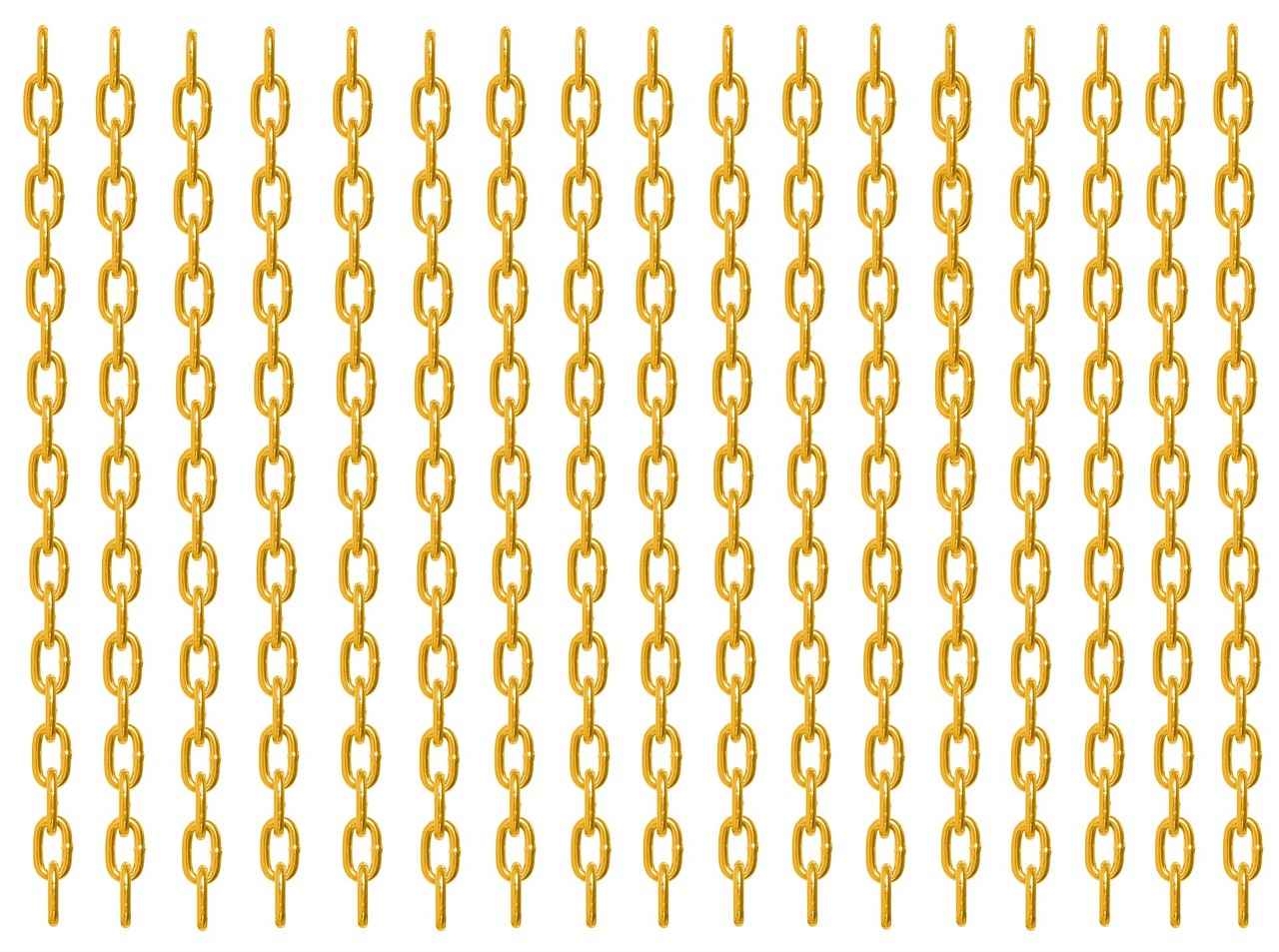
Challenges Facing Smart Jewelry
Smart jewelry represents a fascinating blend of technology and fashion, but it is not without its challenges. As this innovative sector continues to evolve, it faces several hurdles that could hinder its growth and acceptance in the mainstream market. This section will delve into key issues, including battery life, privacy concerns, and market competition, all of which play a significant role in shaping the future of smart jewelry.
One of the most pressing challenges for smart jewelry is its battery life. Unlike traditional jewelry, which requires no power source, smart jewelry is equipped with various sensors and connectivity features that demand energy. Users often report frustration when devices need frequent recharging, which can detract from the overall user experience. Manufacturers are actively working on advancements in battery technology, such as:
- Energy-efficient components that consume less power.
- Innovative battery designs that extend usage time.
- Wireless charging options that simplify recharging.
Addressing battery life is crucial for enhancing user satisfaction and encouraging wider adoption of smart jewelry.
As smart jewelry collects personal data, including health metrics and location information, privacy and data security become paramount concerns. Users are understandably wary about how their data is used and who has access to it. Companies must implement robust security measures to protect sensitive information. Key strategies include:
- Encryption of data both in transit and at rest.
- Transparent privacy policies that clearly outline data usage.
- Regular software updates to patch vulnerabilities.
Establishing trust through effective data security measures is essential for the growth of smart jewelry in a privacy-conscious market.
The smart jewelry market is becoming increasingly competitive, with numerous brands vying for consumer attention. This market competition can be a double-edged sword; while it drives innovation, it also makes it challenging for new entrants to gain traction. To succeed, brands must focus on:
- Unique selling propositions that differentiate their products.
- Targeted marketing strategies that resonate with specific consumer demographics.
- Collaborations with fashion designers to enhance aesthetic appeal.
By carving out a niche and effectively communicating their brand values, companies can navigate the competitive landscape and attract loyal customers.
In conclusion, while smart jewelry holds great promise, it must overcome significant challenges related to battery life, privacy, and market competition. By addressing these issues head-on, the industry can pave the way for a future where smart jewelry seamlessly integrates into everyday life, providing both functionality and style.
Battery Life and Performance
As smart jewelry continues to gain popularity, one of the most pressing concerns among users is battery life. The performance of these devices directly impacts user experience, making it essential to address advancements and ongoing challenges in extending battery performance.
The functionality of smart jewelry often relies on continuous connectivity and data collection. Users expect their devices to provide real-time updates without frequent recharging. Therefore, long-lasting battery life is not just a convenience; it’s a necessity for maintaining user satisfaction and engagement.
Recent innovations in battery technology have shown promise in enhancing the longevity of smart jewelry. Some key advancements include:
- Micro-Batteries: These compact batteries are designed specifically for small devices, allowing smart jewelry to maintain functionality without compromising style.
- Energy Harvesting: Some smart jewelry pieces are now equipped with technology that can harvest energy from the environment, such as solar power or kinetic energy generated through movement.
- Battery Management Systems: Advanced software algorithms are being implemented to optimize energy consumption, ensuring that the device only uses power when necessary.
Despite these advancements, several challenges remain in the quest for improved battery performance:
- Size Constraints: The compact nature of smart jewelry limits the size of the battery, making it difficult to incorporate larger batteries that could hold more charge.
- Power-Hungry Features: Features like GPS tracking and continuous heart rate monitoring consume significant energy, which can lead to quicker battery depletion.
- Consumer Expectations: Users demand not only longer battery life but also enhanced functionalities, which can create a conflict between performance and longevity.
Looking ahead, the industry is exploring various avenues to overcome these challenges:
- Solid-State Batteries: These batteries promise higher energy density and safety compared to traditional lithium-ion batteries, potentially revolutionizing how smart jewelry is powered.
- Wireless Charging: Integrating wireless charging capabilities could eliminate the need for frequent manual charging, allowing users to recharge their devices effortlessly.
- Smart Power Management: Future smart jewelry may feature more sophisticated power management systems that learn user habits and adjust power usage accordingly.
In conclusion, while battery life remains a significant concern for users of smart jewelry, ongoing advancements in technology and innovative solutions offer hope for improved performance. By addressing the challenges of size, power consumption, and user expectations, the future of smart jewelry battery life looks promising. As the industry evolves, we can anticipate smarter, more efficient devices that not only enhance our style but also seamlessly integrate into our daily lives.
Privacy and Data Security
In the age of digital technology, where information is a valuable commodity, the of users have become paramount concerns, especially in the realm of smart jewelry. As these devices collect and transmit personal information, it is essential to address how this data is handled and protected.
Smart jewelry, by its very nature, collects a variety of data, including health metrics, location information, and user preferences. This data can be sensitive, raising questions about who has access to it and how it is used. Users often worry about potential breaches that could lead to identity theft or unauthorized surveillance.
To mitigate these concerns, manufacturers are implementing robust security measures. Here are some key strategies:
- Data Encryption: This process transforms data into a secure format, making it unreadable to unauthorized users. Smart jewelry often employs encryption protocols to protect data during transmission.
- Secure Connections: Utilizing secure communication channels, such as Bluetooth Low Energy (BLE) with advanced security features, ensures that data exchanged between the device and smartphones is less susceptible to interception.
- User Control: Many smart jewelry brands are empowering users with control over their data. This includes options to opt out of data collection or to delete stored information at any time.
Another critical aspect of data security is transparency. Companies are increasingly providing clear privacy policies that outline what data is collected, how it is used, and the measures taken to protect it. Educating users about these policies fosters trust and encourages responsible usage of smart jewelry.
Manufacturers are also adhering to various regulations aimed at protecting user data. Compliance with frameworks such as the General Data Protection Regulation (GDPR) and the California Consumer Privacy Act (CCPA) ensures that companies are held accountable for their data handling practices. These regulations mandate that users are informed about their rights regarding personal data.
As technology evolves, so do the methods of securing user data. Future innovations may include:
- Biometric Authentication: Integrating biometric features, such as fingerprint or facial recognition, can enhance security by ensuring that only authorized users can access their data.
- Blockchain Technology: Leveraging blockchain could provide a decentralized method of storing data, making it more difficult for hackers to manipulate or steal information.
In conclusion, while the collection of personal data through smart jewelry raises valid privacy concerns, the industry is taking significant steps to ensure data security. By employing advanced technologies, maintaining transparency, and adhering to regulations, manufacturers are working diligently to protect user information. As consumers become more educated about these measures, they can embrace the benefits of smart jewelry with greater confidence.

The Future of Smart Jewelry
The evolution of smart jewelry is a fascinating journey that intertwines technology with fashion. As we look to the future, it is clear that this innovative sector is poised for remarkable growth and transformation. With advancements in technology and changing consumer preferences, the landscape of smart jewelry is set to evolve significantly over the coming years.
One of the most exciting prospects for smart jewelry is the integration of artificial intelligence (AI). This technology could enable smart jewelry to learn user preferences and habits, providing personalized recommendations for health and fitness. Imagine a bracelet that not only tracks your activity but also suggests tailored workouts based on your daily performance!
In the future, we may see enhanced connectivity between smart jewelry and other devices. With the rise of the Internet of Things (IoT), smart jewelry could seamlessly communicate with smartphones, smart home devices, and even wearable health monitors. This connectivity will not only streamline user experiences but also create a holistic ecosystem for health and wellness management.
As consumers become more environmentally conscious, the demand for sustainable materials in smart jewelry is likely to increase. Brands may focus on using recycled materials and eco-friendly production methods to appeal to this growing market segment. This shift could create a new niche within the smart jewelry industry, emphasizing both style and sustainability.
The smart jewelry market is projected to experience significant growth, driven by increasing consumer demand for wearable technology. Factors such as rising health awareness and the popularity of fitness tracking are expected to fuel this trend. Furthermore, as more consumers embrace the concept of smart wearables, the market will likely expand to include a wider variety of products, catering to diverse tastes and preferences.
With the advancement of technology, privacy and data security will remain paramount. Future smart jewelry manufacturers will need to prioritize user data protection, employing robust encryption methods and transparent data policies. This focus on security will be essential to build consumer trust and ensure the widespread adoption of smart jewelry.
Customization is becoming increasingly important in the fashion industry, and smart jewelry is no exception. Future innovations may allow users to personalize their devices not only in terms of aesthetics but also in functionality. Imagine being able to choose specific health metrics to track or even adjust the device’s appearance with interchangeable components!
As technology continues to advance, the cost of manufacturing smart jewelry is expected to decrease, making it more accessible to a broader audience. This democratization of technology could lead to increased adoption rates, as consumers from various backgrounds can invest in smart jewelry without breaking the bank.
In conclusion, the future of smart jewelry is bright and full of potential. With innovations on the horizon, from AI integration to sustainable practices, the market is set to evolve in exciting ways. As technology advances and consumer preferences shift, smart jewelry will undoubtedly play a significant role in the intersection of fashion and functionality.
Integration with Smart Home Devices
The integration of smart jewelry with smart home devices marks a significant advancement in the realm of wearable technology. As the demand for interconnected devices grows, the potential for smart jewelry to enhance user experience in home automation becomes increasingly evident. This section delves into the implications of such connectivity for users, exploring the benefits, challenges, and future possibilities.
Smart jewelry can serve as a central hub for managing smart home devices. For instance, a smart ring or bracelet can allow users to control lighting, temperature, and security systems with simple gestures or taps. This seamless interaction not only enhances convenience but also promotes a more efficient lifestyle.
- Enhanced Convenience: Users can manage their home environment directly from their jewelry, eliminating the need to reach for a smartphone or use voice commands.
- Increased Security: Smart jewelry can include features like biometric authentication, ensuring that only authorized users can access smart home systems.
- Personalized Notifications: Users can receive alerts about home security, energy usage, or appliance status directly on their wearable device, making it easier to stay informed.
While the potential for integration is exciting, it also presents several challenges:
- Compatibility Issues: Ensuring that smart jewelry is compatible with various smart home systems can be complex, as different brands may use different protocols.
- Battery Life Concerns: The more features a piece of smart jewelry has, the more power it requires. Balancing functionality with battery efficiency is a critical challenge.
- Privacy Risks: With increased connectivity comes the risk of data breaches. Users must be aware of how their data is collected and used.
The future of smart jewelry in the context of home automation is promising. As technology evolves, we can expect:
- Advanced Sensors: Future smart jewelry may include more sophisticated sensors that can monitor environmental conditions and adjust home settings accordingly.
- AI Integration: Artificial intelligence could play a role in predicting user preferences and automating home settings based on habits and routines.
- Seamless User Experience: The goal will be to create an ecosystem where smart jewelry and home devices communicate effortlessly, providing users with a cohesive experience.
In conclusion, the integration of smart jewelry with smart home devices presents a transformative opportunity for users. By enhancing convenience, security, and personalization, this connectivity can significantly improve daily life. However, addressing the challenges of compatibility, battery life, and privacy will be crucial for the successful adoption of these innovative technologies.
Potential Market Growth
The smart jewelry market is on the brink of a remarkable transformation, with projections indicating significant growth in the coming years. This surge is driven by a combination of evolving consumer preferences, technological advancements, and the increasing integration of smart features into everyday fashion. In this section, we will explore the key market trends, rising consumer demand, and the various factors that are propelling this growth.
As consumers become more health-conscious and tech-savvy, the demand for smart jewelry is rapidly increasing. Wearable technology has transitioned from niche products to mainstream fashion statements, with smart jewelry leading the charge. Notably, the trend of personalization is gaining traction, as users seek unique designs that reflect their individual styles while incorporating functional technology.
Consumer demand is a critical driver of growth in the smart jewelry sector. With the rise of the wellness movement, individuals are increasingly interested in products that promote health and fitness. Smart jewelry offers functionalities such as activity tracking, heart rate monitoring, and sleep analysis, making it appealing to a broad audience. Additionally, the convenience of receiving notifications and alerts through stylish accessories enhances user experience and encourages adoption.
- Technological Advancements: Innovations in sensor technology, battery life, and connectivity are making smart jewelry more efficient and user-friendly.
- Increased Investment: Major tech companies and startups alike are investing heavily in research and development, leading to a wider variety of products.
- Collaborations with Fashion Brands: Partnerships between tech firms and established fashion brands are resulting in stylish designs that appeal to a broader audience.
- Growing Awareness: Increasing awareness of health and wellness benefits associated with smart jewelry is driving consumer interest.
Looking ahead, the smart jewelry market is expected to continue its upward trajectory. As technology evolves, we can anticipate even more sophisticated features, such as AI integration for personalized health insights and improved user interaction. Furthermore, the potential for integration with other smart devices will enhance functionality and user engagement, making smart jewelry an essential accessory for the modern consumer.
In conclusion, the smart jewelry market is poised for significant growth, driven by evolving consumer preferences, technological innovations, and strategic partnerships within the fashion industry. As these trends continue to unfold, we can expect smart jewelry to play an increasingly vital role in the intersection of technology and fashion.
Frequently Asked Questions
- What is smart jewelry?
Smart jewelry is a fusion of fashion and technology, designed to offer features like fitness tracking, notifications, and health monitoring, all while looking stylish. It allows wearers to stay connected without compromising on aesthetics.
- How does smart jewelry work?
Smart jewelry operates using various sensors and connectivity options, such as Bluetooth, to sync with smartphones and other devices. This integration enables it to collect and display data, providing valuable insights into health and activity levels.
- What types of smart jewelry are available?
Smart jewelry comes in many forms, including rings, bracelets, and necklaces. Each type serves different purposes, from fitness tracking rings that monitor health metrics to notification bracelets that keep you updated discreetly.
- Are there health benefits to wearing smart jewelry?
Absolutely! Smart jewelry can help users monitor their health by tracking physical activity, heart rate, and sleep patterns, promoting healthier lifestyles and encouraging regular fitness routines.
- What challenges does smart jewelry face?
Some of the main challenges include battery life, privacy concerns regarding data security, and the competitive market landscape. These factors can affect user experience and the overall growth of the smart jewelry industry.
